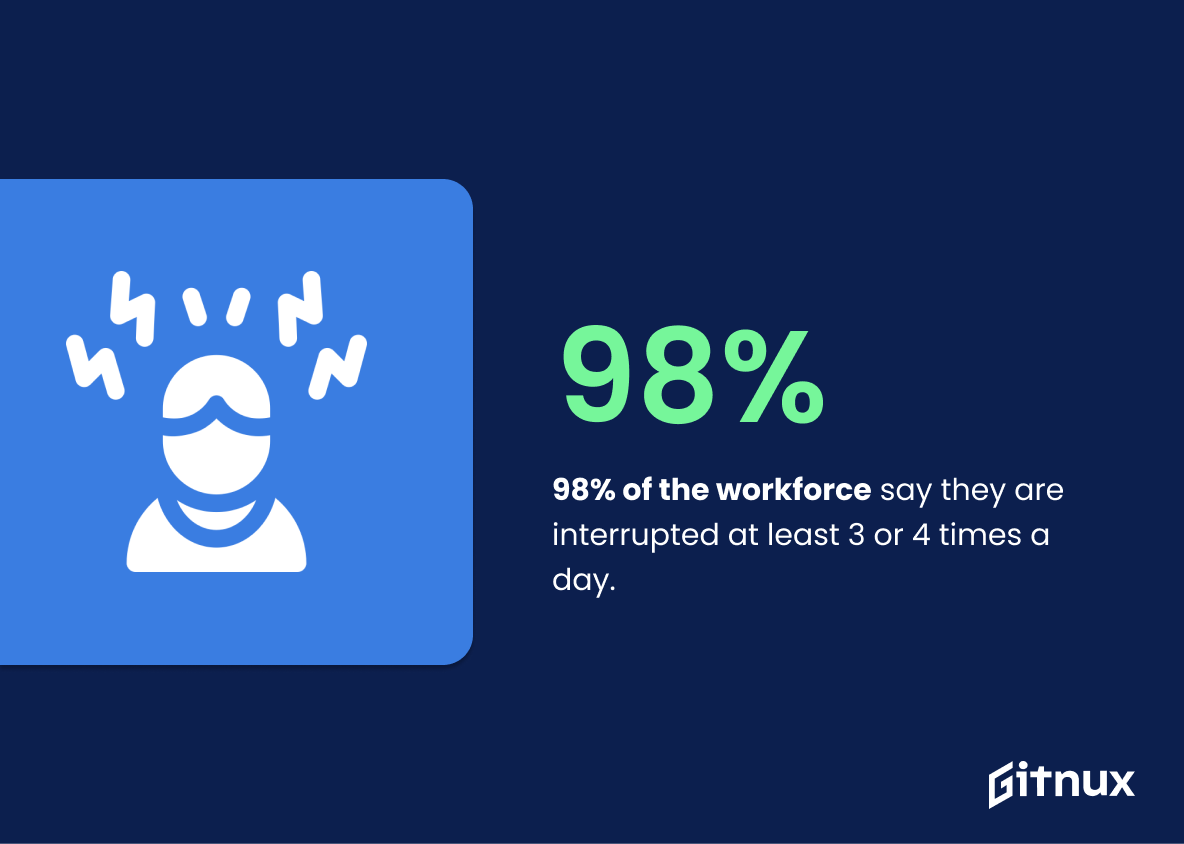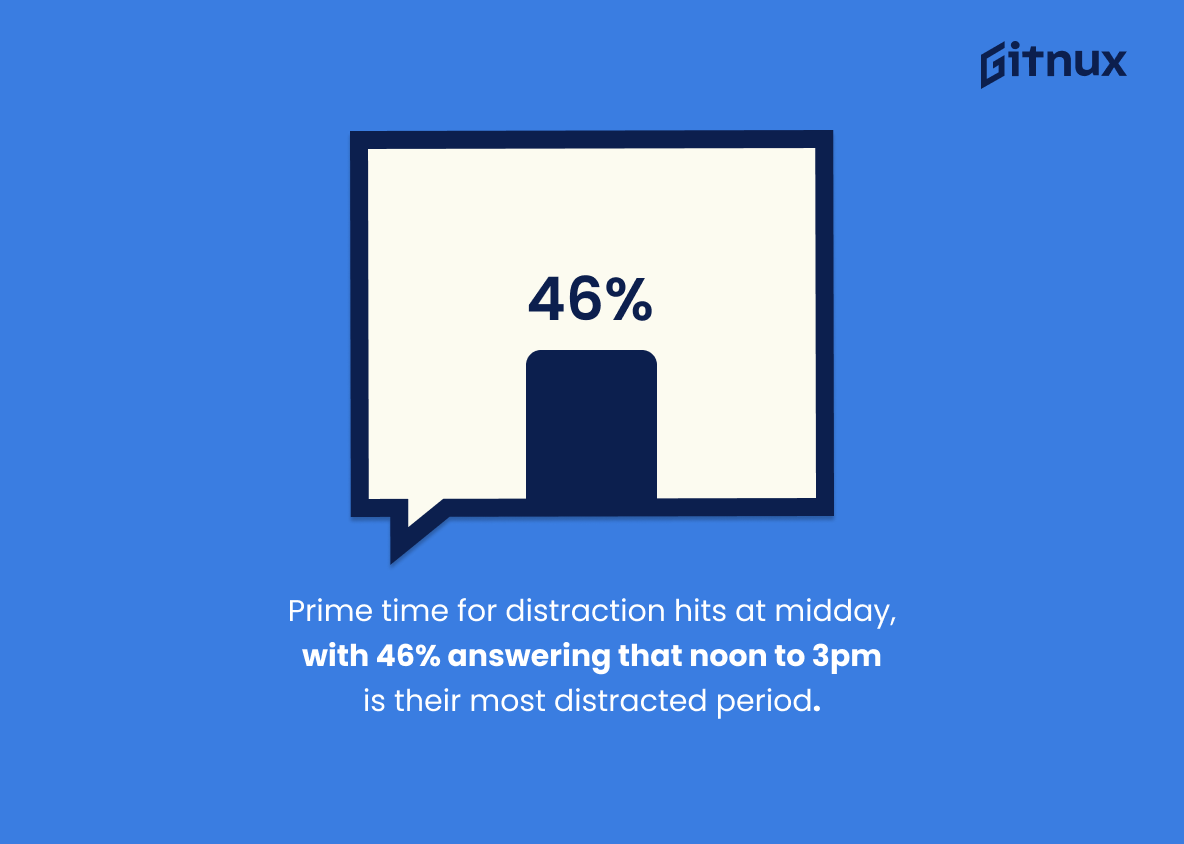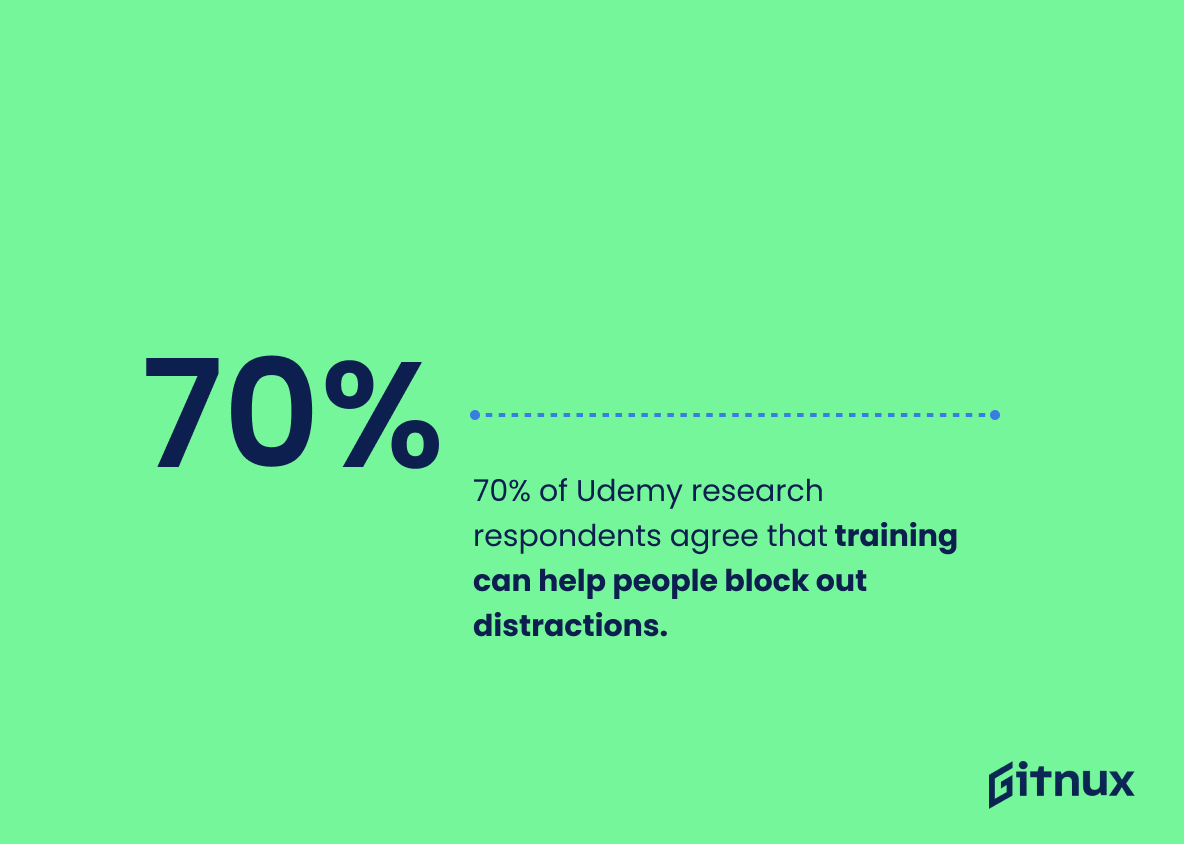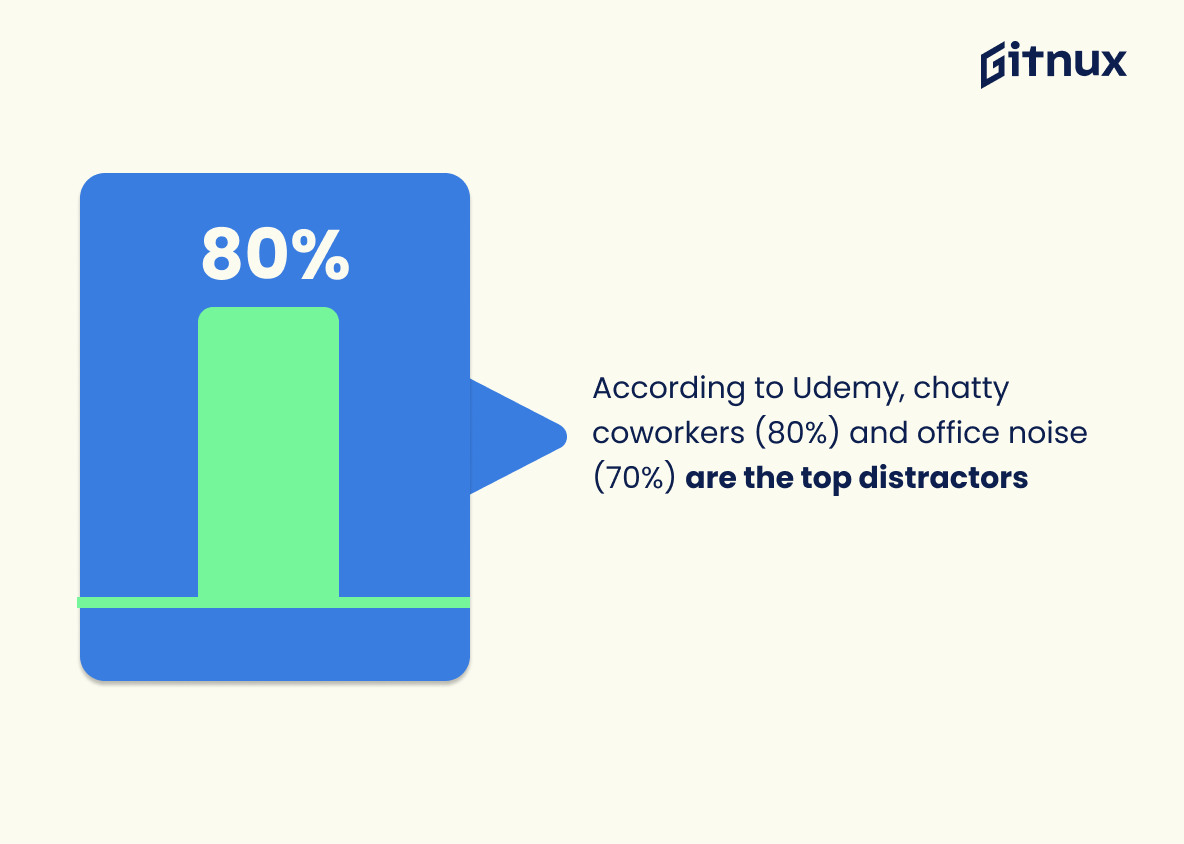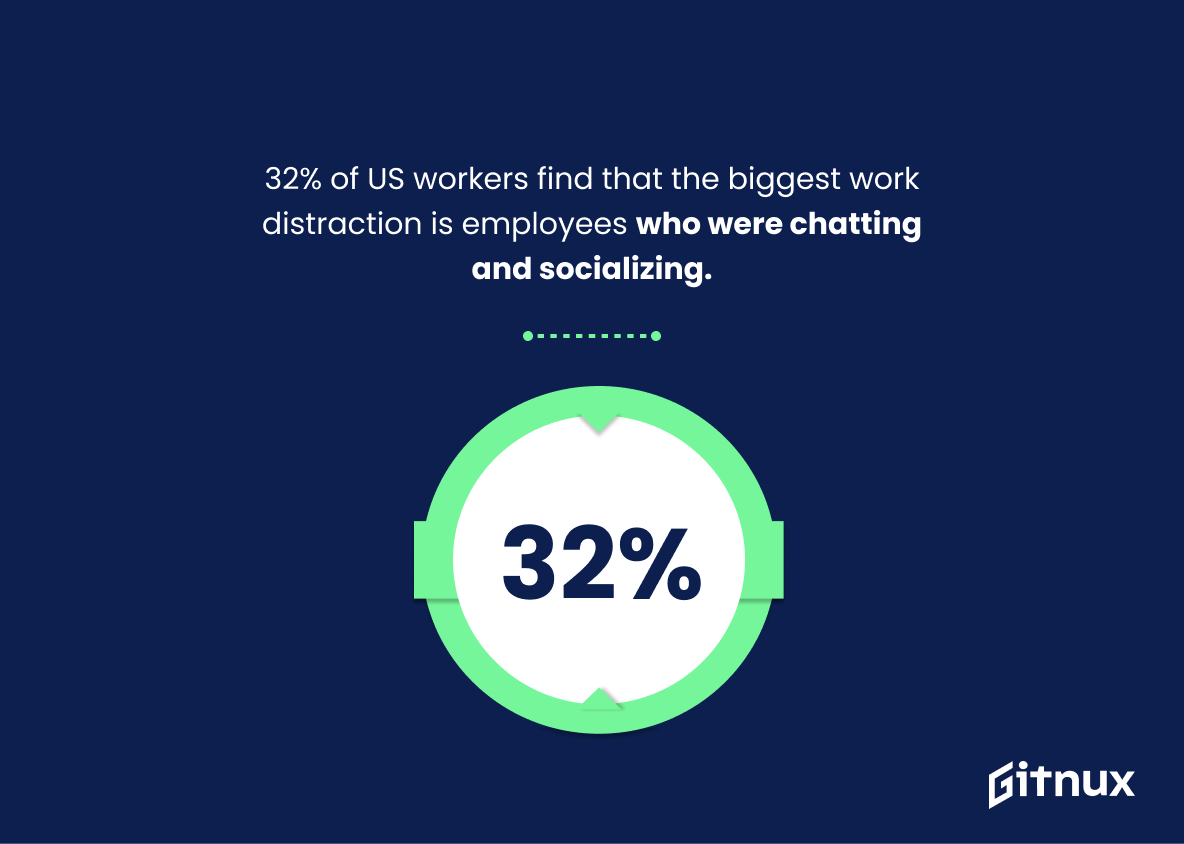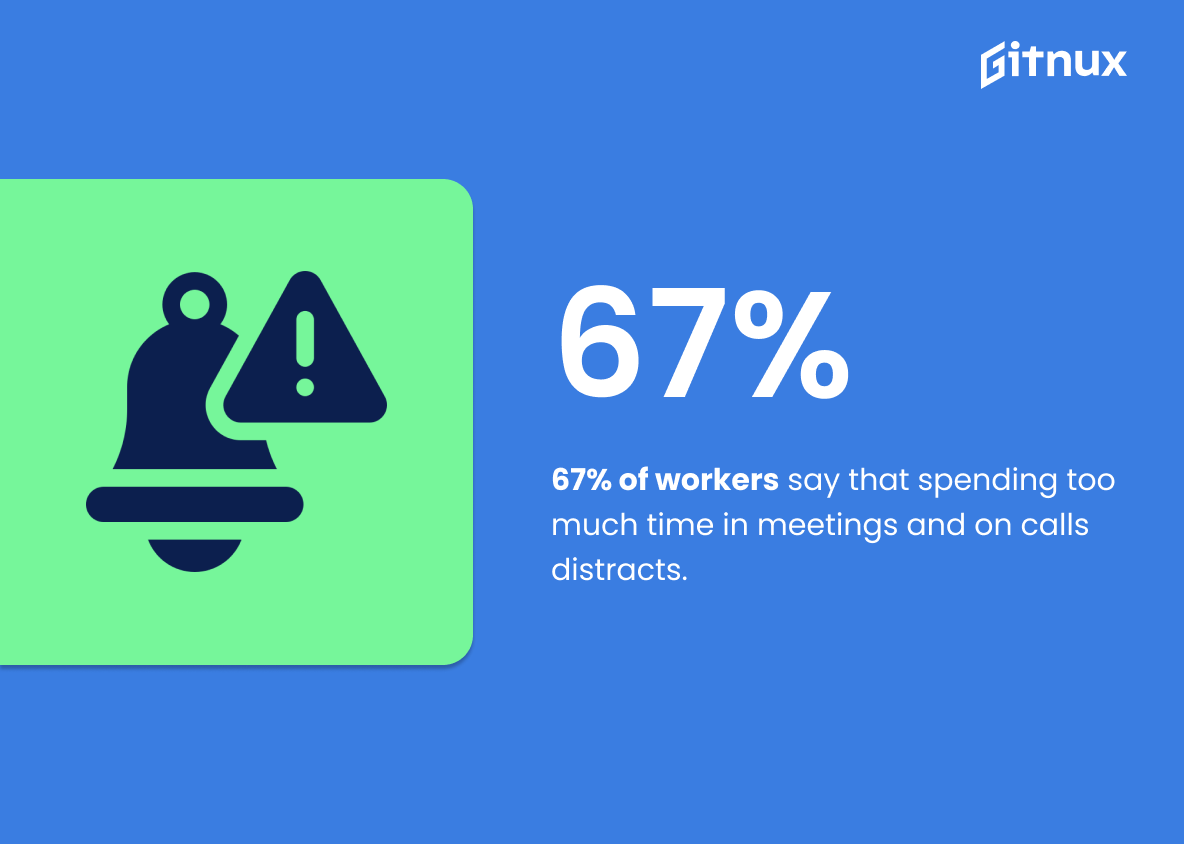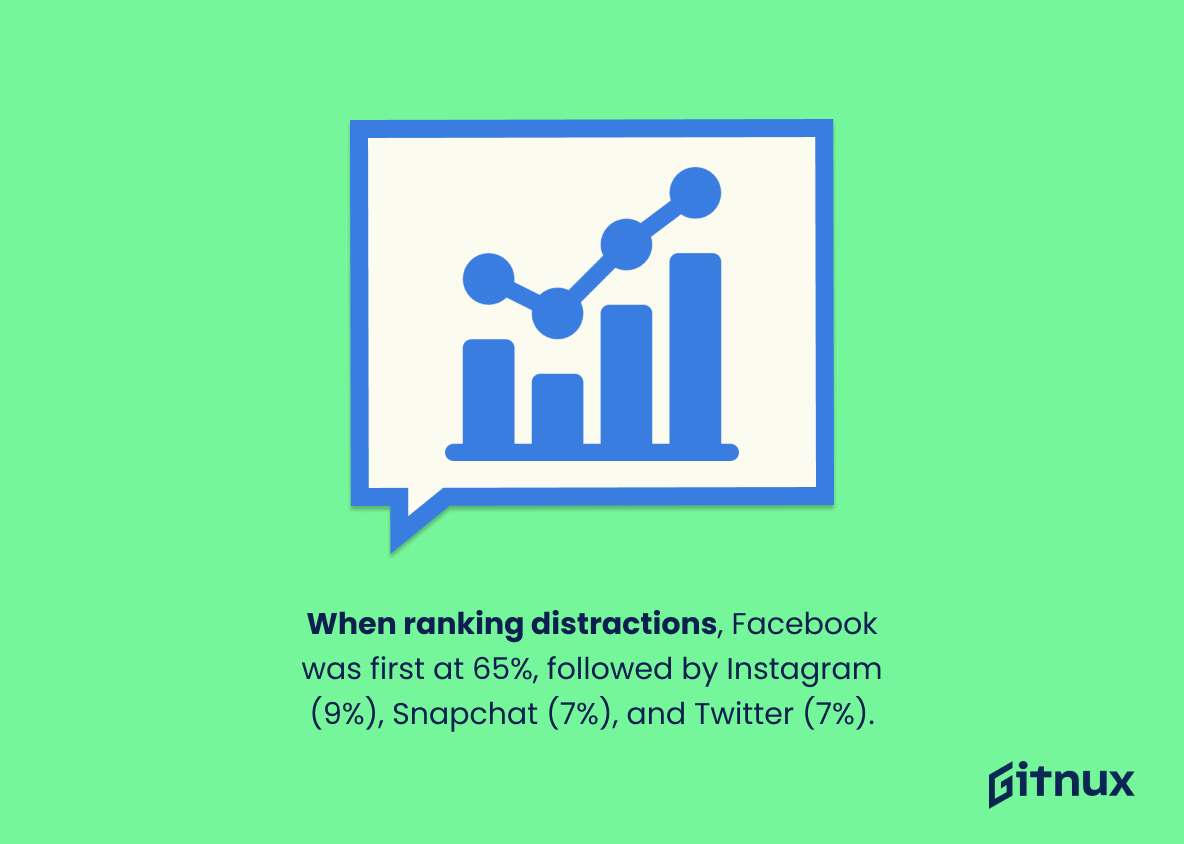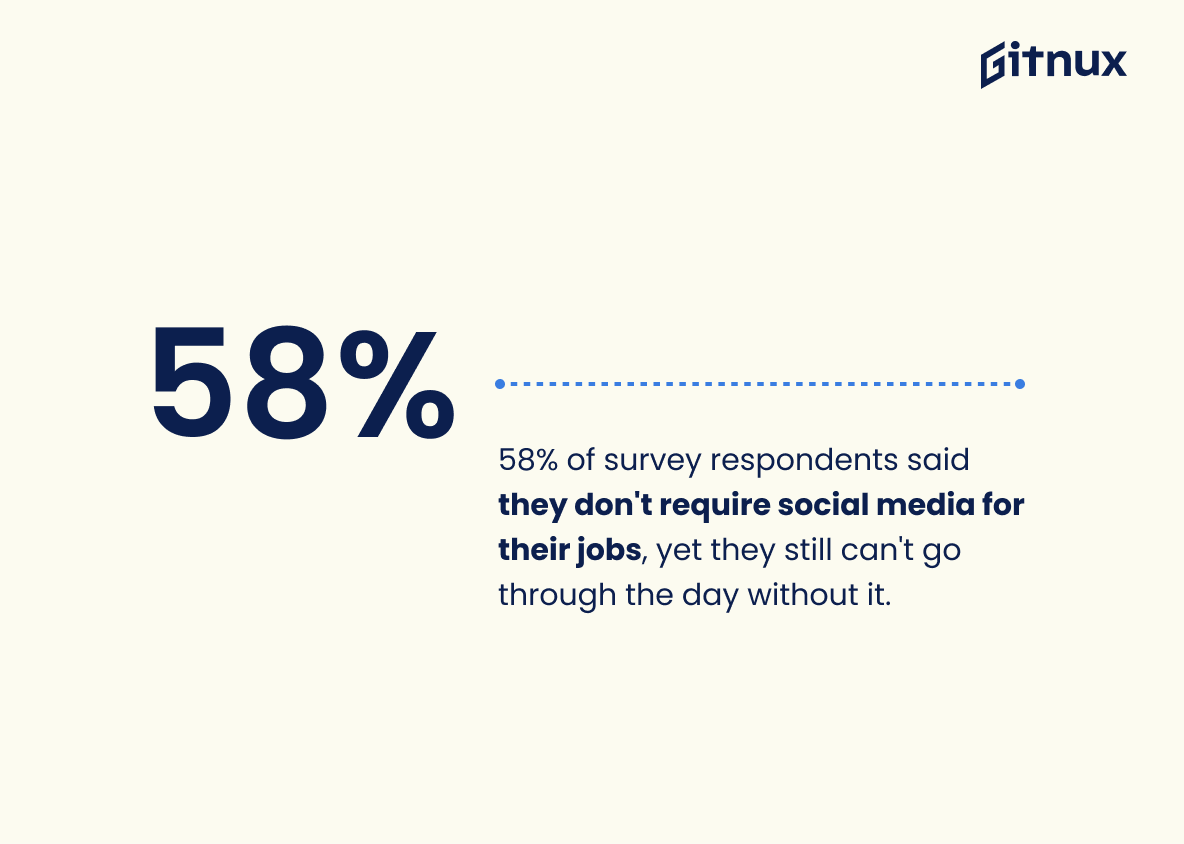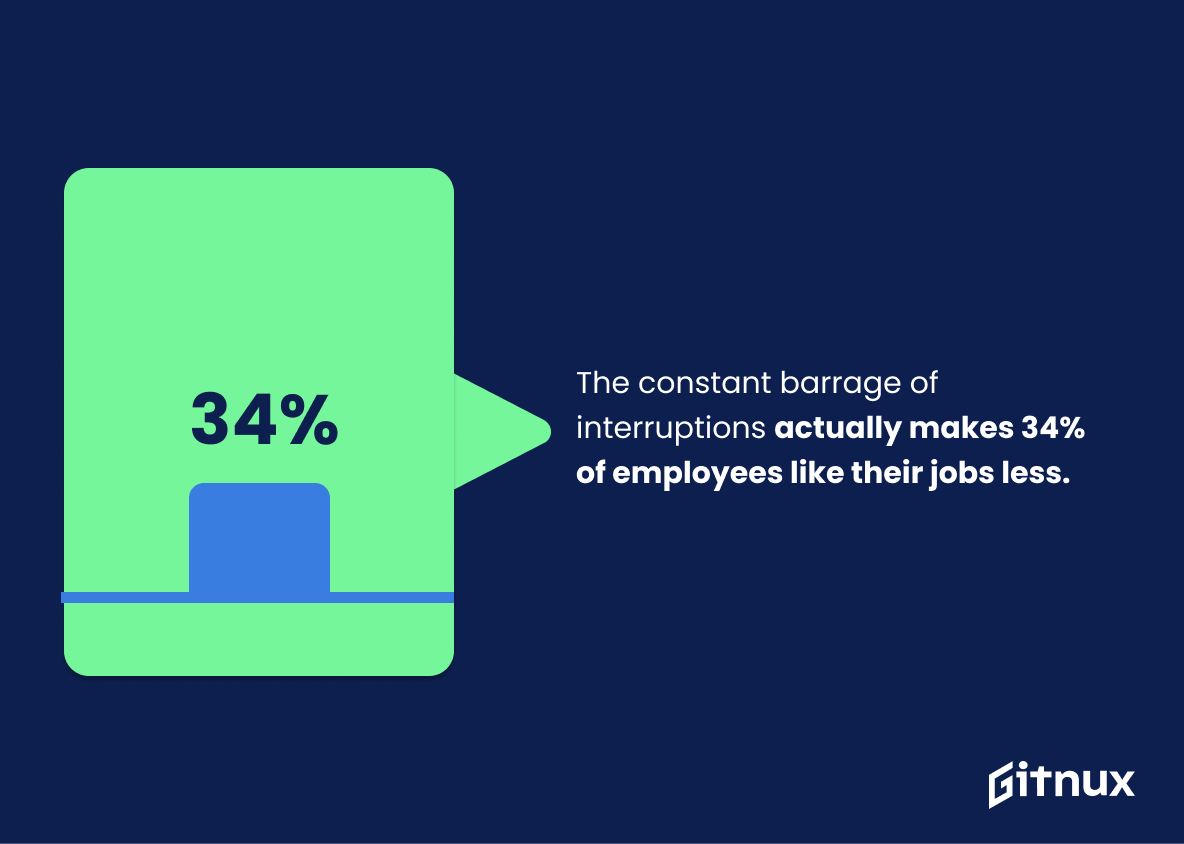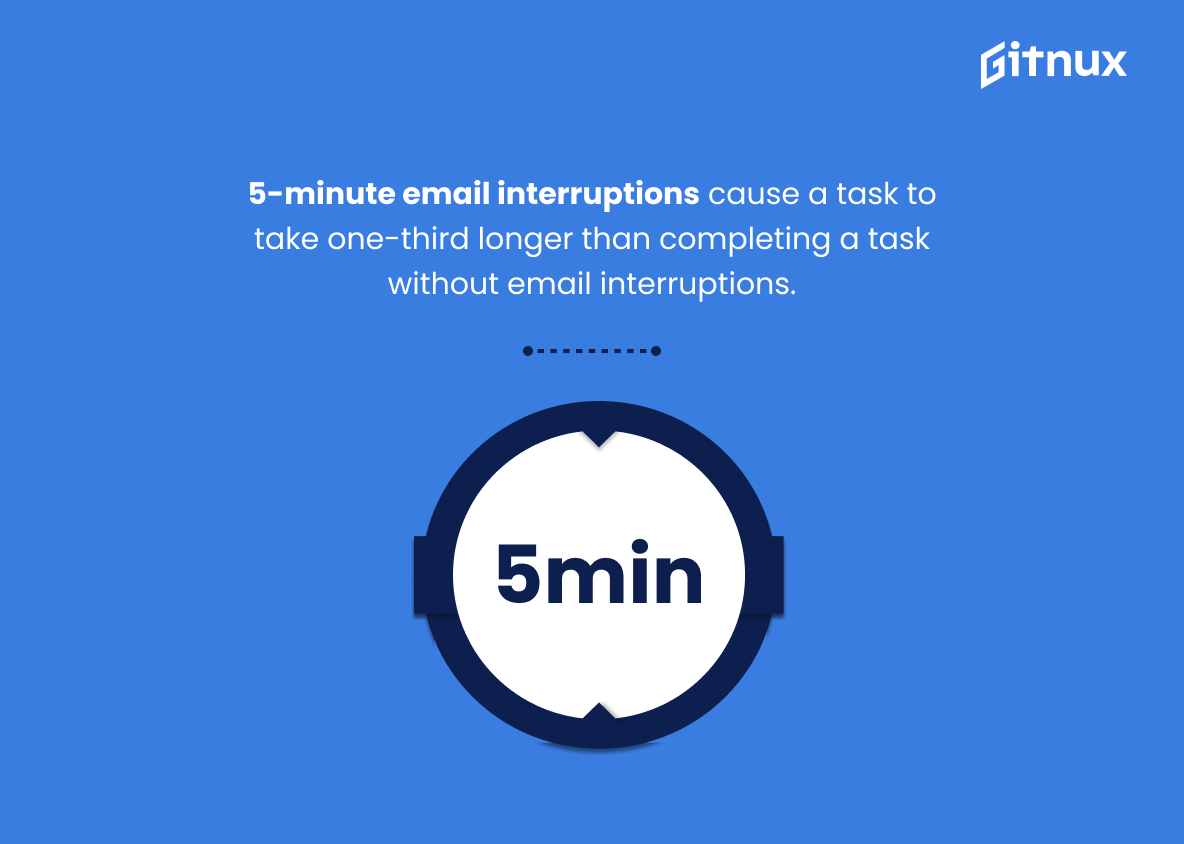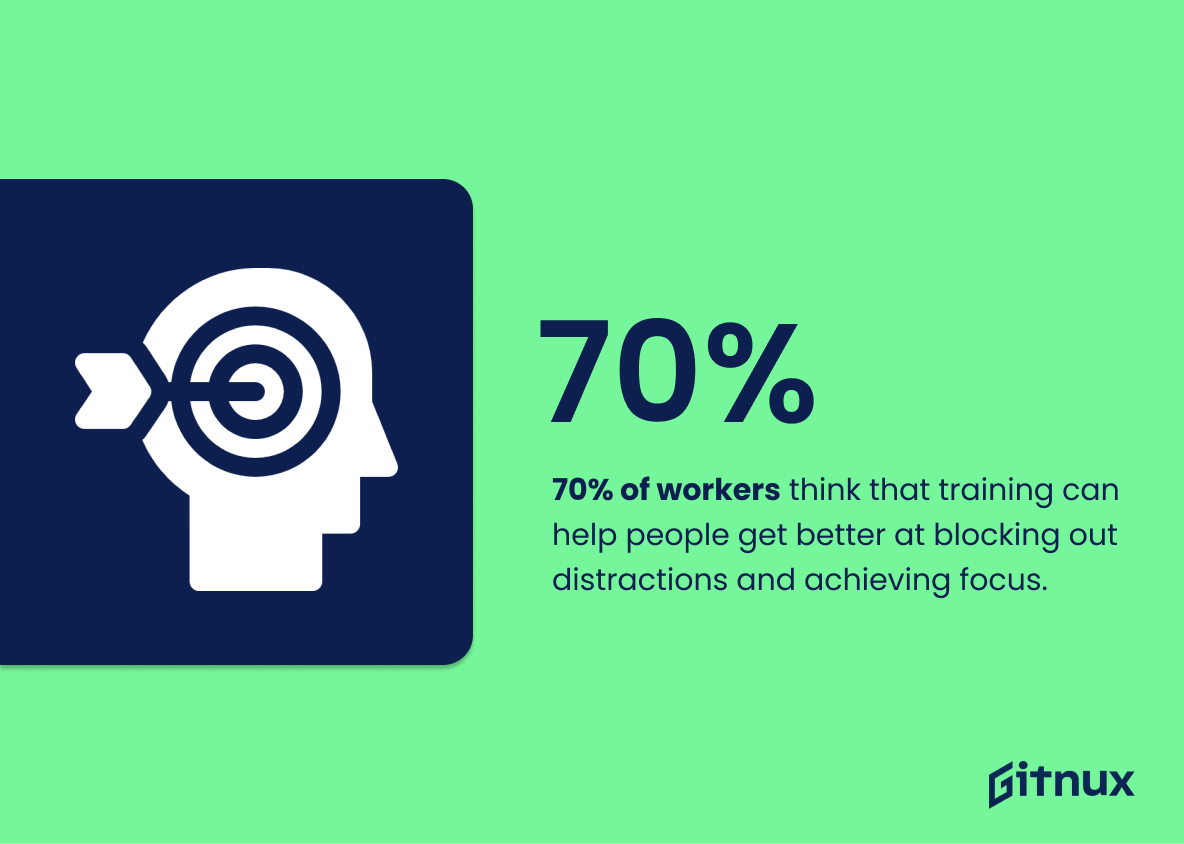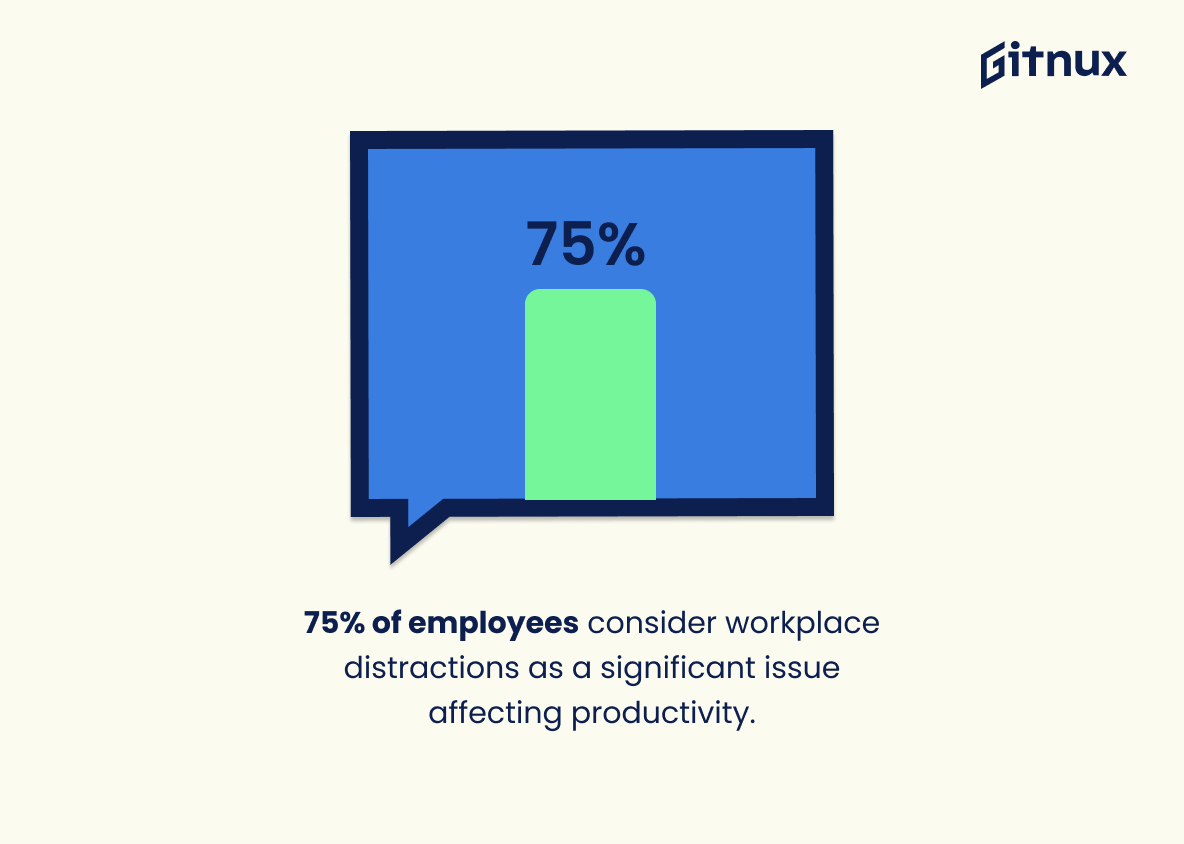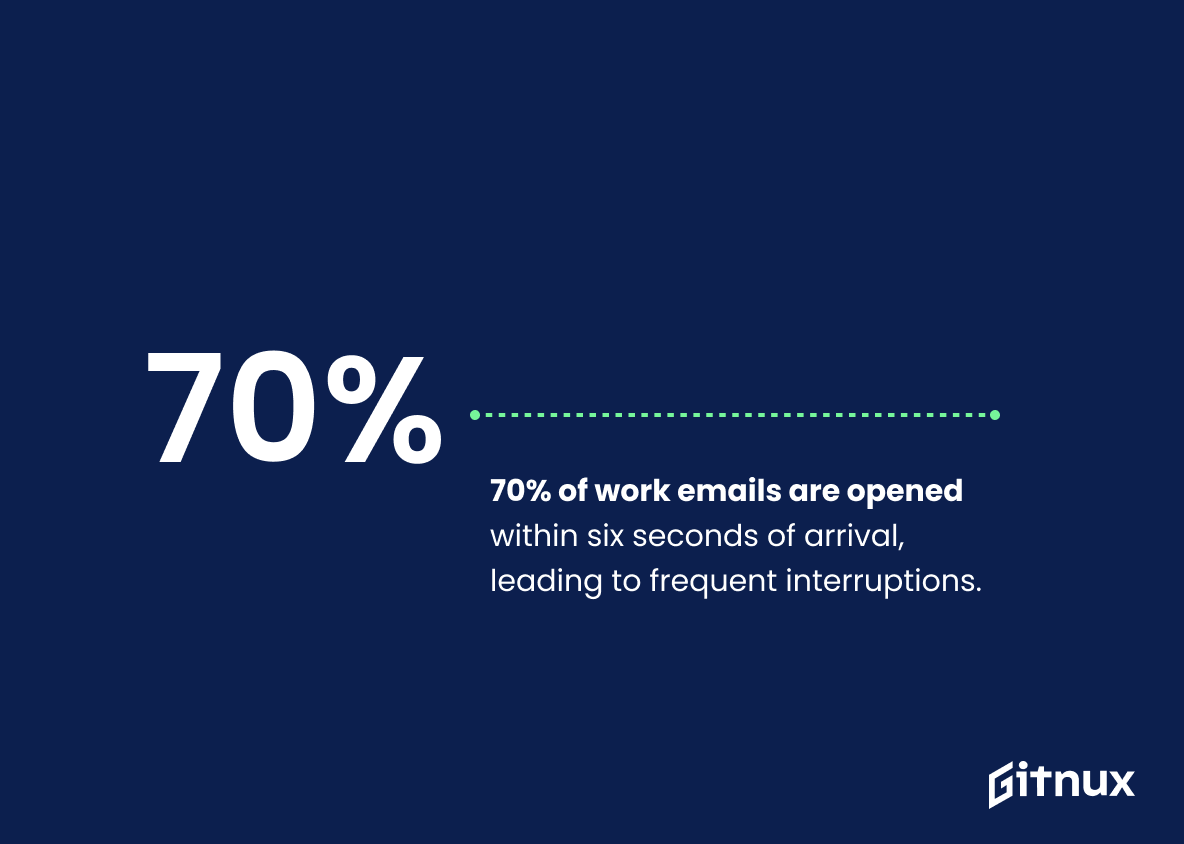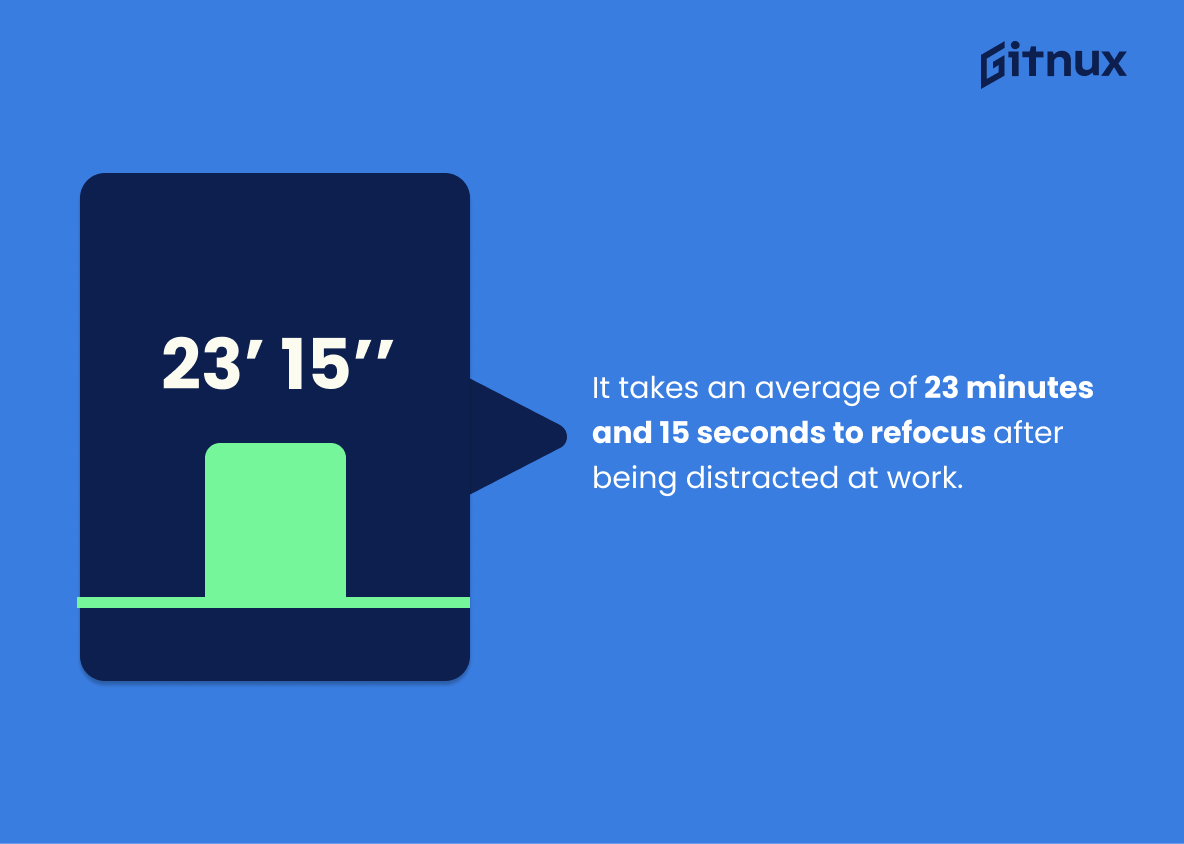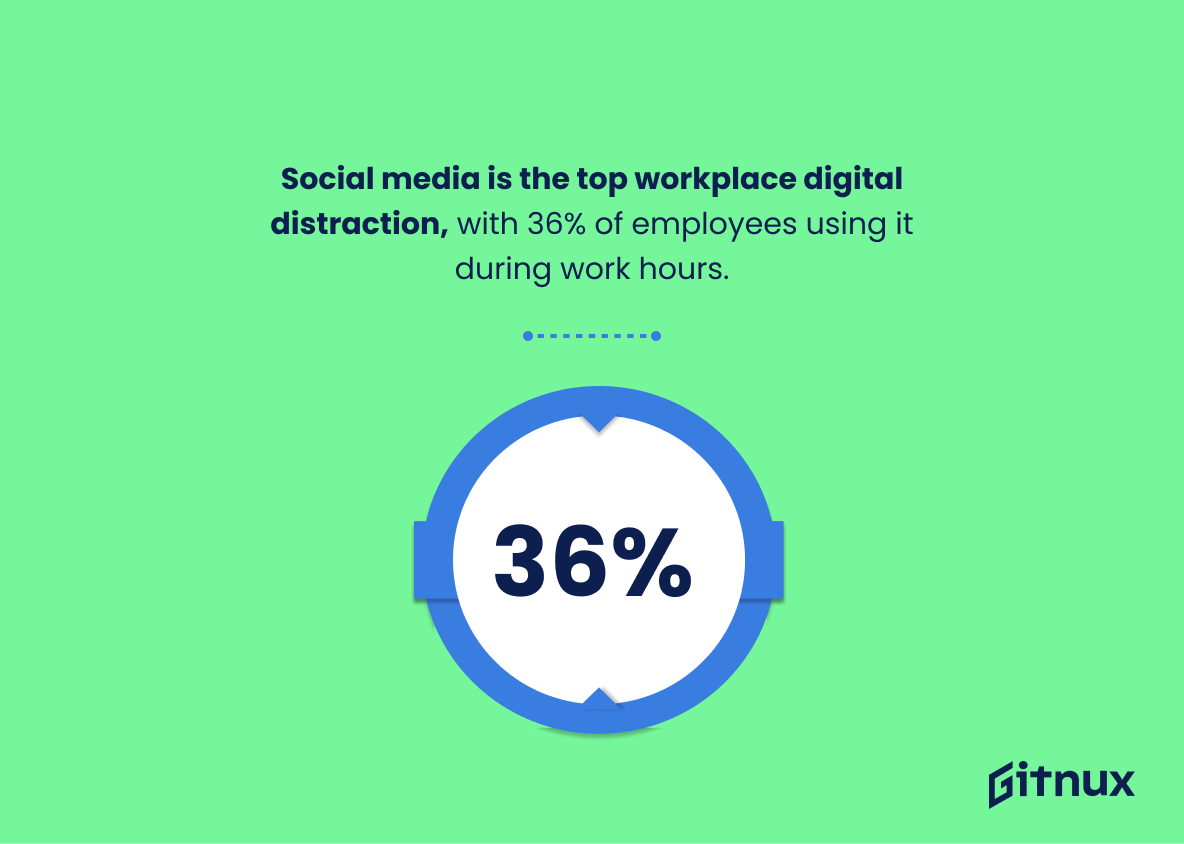In today’s world, it is becoming more and more difficult to stay focused on work tasks due to the many distractions that exist in the workplace. From the constant notifications from our phones to the conversations with our coworkers, it can be hard to stay on track. To better understand the impact of these distractions, it is important to look at the statistics.
In this article, we will show you the main workplace distractions statistics and how they can affect productivity. We will also explore potential solutions to help reduce the number of workplace distractions.
General workplace distractions statistics
98% of the workforce say they are interrupted at least 3 or 4 times a day.
It takes 23 minutes and 15 seconds to fully recover focus after a distraction.
Prime time for distraction hits at midday, with 46% answering that noon to 3pm is their most distracted period. It wouldn’t be a stretch to conclude that the post-lunchtime slump is killing a lot of afternoon productivity.
Companies lose out on substantial profit and 720 hours a year per person working.
70% of Udemy research respondents agree that training can help people block out distractions.
Despite all the negative impacts of the distraction problem, most employees haven’t raised the issue with a manager, though men are more likely to have done so (41% vs. 28% women). Men are also more likely to have participated in relevant training (25% vs. 14% women).
When people get a chance to work without distractions, 75% feel more productive and 57% are motivated to do their best. 51% feel more confident, 49% are happier at work, and 44% deliver higher quality work.
The most common workplace distractions
According to Udemy, chatty coworkers (80%) and office noise (70%) are the top distractors overall, followed by the feeling overwhelmed by changes in the workplace (61%).
Among the workforce’s youngest, however, the number 2 distraction is the smartphone, with 69% acknowledging that checking a personal device interferes with concentration. Millennials and Gen Z are also the most likely age group to describe themselves as distracted at work. 74% of them report being distracted, and of those, 46% say it makes them feel unmotivated, and 41% say it stresses them out.
32% of US workers find that the biggest work distraction is employees who were chatting and socializing. 25% voted that non-business-related internet usage is a big distraction, 23% of workers voted for meetings, and 9% find personal calls or emails the biggest workplace distractions.
On average, 84.4% of people are distracted at work. The most common distractions are email (26%), phone calls/texts (55%), co-workers (27%), and the Internet (41%).
According to a Korn Ferry survey, 67% of workers say that spending too much time in meetings and on calls distracts them from making an impact at work.
The study, in which 300 people performed a sequence-based procedure on a computer, found that interruptions of about 3 seconds doubled the error rate.
60% of Udemy survey respondents said meetings are just another distraction from the work they need to complete. Compounding the problem, meetings themselves frequently fall victim to interruptions and distractions. They usually get disrupted by small talk and office gossip (54%), late arrivals/early departures (37), side discussions about other projects (45%), and technology/connectivity problems (33%).
Across the general populace, 59% agree that personal use of technology is more distracting than work tools, and Facebook is far and away the top attention thief. A whopping 86% described Facebook as a workplace distraction—twice as much as Instagram. When asked to rank various social media sites and communication tools by a degree of distraction, Facebook came in first (65%), followed distantly by Instagram (9%), Snapchat (7%), and Twitter (7%).
36% of millennials and Gen Z say they spend 2 hours or more checking their smartphones during the workday. That adds up to at least 10 hours weekly when they’re doing something outside their job responsibilities. This behavior isn’t limited to junior workers, either. Overall, 62% of survey respondents spend about an hour per day looking at their phones. Meanwhile, a third of Baby Boomers claim they never engage with their personal devices at work.
58% of survey respondents said they don’t need social media to do their jobs, but they still can’t make it through the day without it. Though over 40% do have “occasional” work-related activity on social media, 76% have never received training from their employer on using it as part of their work experience. 51% of workers reported that their employers actually restrict social media use.
The negative impact of workplace distractions
The constant barrage of interruptions actually makes 34% of employees like their jobs less.
75% of employers say 2 or more hours a day are lost in productivity because employees are distracted. 43% say at least 3 hours a day are lost. Productivity killers can lead to negative consequences for the organization, including compromised quality of work (48%), lower morale because other workers have to pick up the slack (38%), negative impact on boss/employee relationship (28%), missed deadlines (27%), loss in revenue (26%), and negative impact on client relationships (20%).
The results from a ResearchGate study indicate that 5-minute email interruptions cause a task to take one-third longer than completing a task without email interruptions.
50% of employees say that they are distracted by their phones at work.
Companies spend 31 hours a month in meetings with no tangible value, with 71% of staff mismanaging their time every week as a result. Of all the office distractions, meetings are among the most obvious examples of losing productivity.
Ways to prevent distractions at work
Top 3 things employees do to cope with distractions: turn off the phone during work hours (43%), music, meditation, or other relaxation techniques (30%), and fill time with simple tasks that don’t require as much focus (26%).
70% of workers think that training can help people get better at blocking out distractions and achieving focus. Workers would also like more freedom to work remotely and follow flexible schedules; 52% said they’re more productive when not working in a noisy office.
Other options for eliminating workplace distractions, in employees’ opinion, are: allowing flexible schedules and remote options (40%), establishing designated spaces for quiet vs. noisy work (38%), providing training on time management, effective meeting skills, etc. (37%). Defining cultural norms around noise levels, interruptions, etc. (31%) and regular “no meetings” days (23%) are also helpful steps to a more productive environment.
76% of employers have taken at least one step to mitigate productivity killers, such as blocking certain Internet sites (32%) and banning personal calls/cell phone use (26%). Other efforts to mitigate productivity killers include scheduling lunch and break times (24%), monitoring emails and Internet usage (19%), limiting meetings (17%), and allowing people to telecommute (14%). Other options are to have an open space layout instead of cubicles (14%), restrict the use of speakerphones if not in an office (13%), and increase the height of cubicle walls to make it easier to concentrate (8%).
86% of employees believe they are more productive when working alone, and even if that’s only for an hour or two, it will still improve productivity.
75% of staff say they are more productive after attending training for distractions at work.
Supplementary Statistics
75% of employees consider workplace distractions as a significant issue affecting productivity.
This is a powerful indicator of the impact workplace distractions have on productivity. It shows that the majority of employees are aware of the issue and consider it to be a major problem. This statistic can be used to emphasize the importance of reducing workplace distractions in order to increase productivity and efficiency.
70% of work emails are opened within six seconds of arrival, leading to frequent interruptions.
On this, we can see how quickly work emails can take over our attention and disrupt our workflow. It also highlights the need for employees to be mindful of how they manage their time and prioritize tasks in order to stay productive and focused. This statistic is a powerful illustration of how easily workplace distractions can occur and how important it is to be aware of them.
It takes an average of 23 minutes and 15 seconds to refocus after being distracted at work.
This highlights the amount of time wasted when employees are pulled away from their tasks, and the difficulty of regaining focus afterwards. It is a powerful illustration of the need to reduce distractions in the workplace and ensure that employees are able to stay on task.
Social media is the most common digital distraction in the workplace, with 36% of employees admitting to spending time on it during work hours.
Thus, employers need to be aware of the potential for employees to be distracted by social media during work hours, and to take steps to ensure that employees are focused on their work. This statistic is an important part of any discussion about workplace distractions, as it provides a clear indication of the scope of the problem.
Companies that address workplace distractions experience a 20% decrease in the number of errors in employees’ work.
Companies can therefore significantly reduce the number of errors in employees’ work. This is an important point to make in a blog post about workplace distractions statistics, as it demonstrates the tangible benefits of taking action to reduce distractions.
The average worker spends 28% of his or her time at work dealing with unnecessary interruptions and recovering from them.
It highlights the amount of time that is wasted on unnecessary interruptions, and the amount of effort that is required to recover from them. This is an important statistic to consider when discussing workplace distractions, as it demonstrates the tangible cost of these distractions.
Conclusion
Distractions in the workplace have become a major issue in today’s society, with more and more people struggling to stay focused and productive. The workplace distractions statistics show that distractions can have a huge impact on employee productivity, morale, and even health.
Companies need to take steps to reduce distractions in the workplace and create an environment that is conducive to productivity. By providing employees with the tools they need to stay focused and productive, companies can create a better work environment for their employees.
Check out the latest Workplace Productivity Statistics
References
TeamStage: “Workplace Distractions Statistics: Problems and Solutions in 2022”, cited in January 2023 (Source)
Udemy: “2018 Workplace Distraction Report”, cited in January 2023 (Source)
Statista: “Biggest work distractions in the United States in 2018”, cited in January 2023 (Source)
BusinessDIT: “How Long Does it take to Refocus After an interruption?”, cited in January 2023 (Source)
Korn Ferry: “Working or wasting time?”, cited in January 2023 (Source)
CareerBuilder: “New CareerBuilder Survey Reveals How Much Smartphones Are Sapping Productivity at Work”, cited in January 2023 (Source)
Michigan State University: “Brief interruptions spawn errors” , cited in January 2023 (Source)
ResearchGate: “Effects of e-mail addiction and interruptions on employees”, cited in January 2023 (Source)
Career Builder: “New CareerBuilder Survey Reveals How Much Smartphones Are Sapping Productivity at Work”, cited in January 2023 (Source)
ZipDo, cited June 2023: Workplace Distractions Statistics
